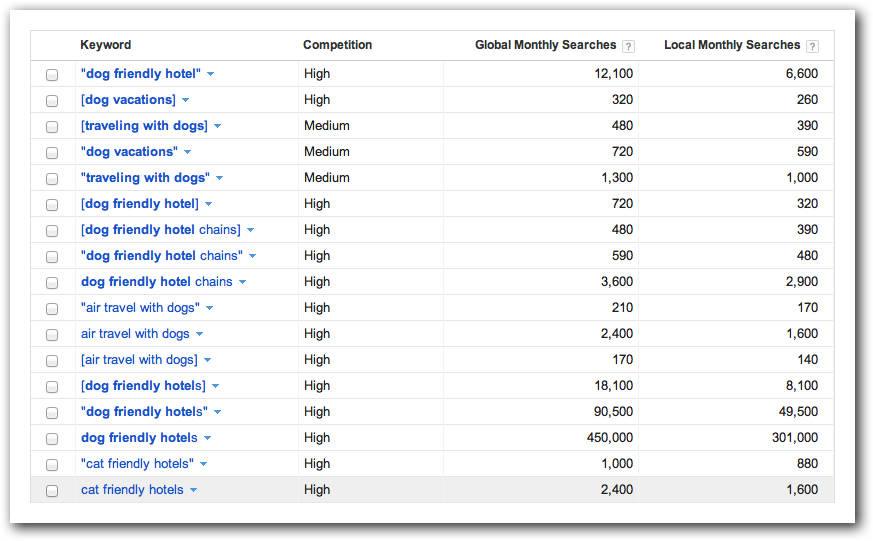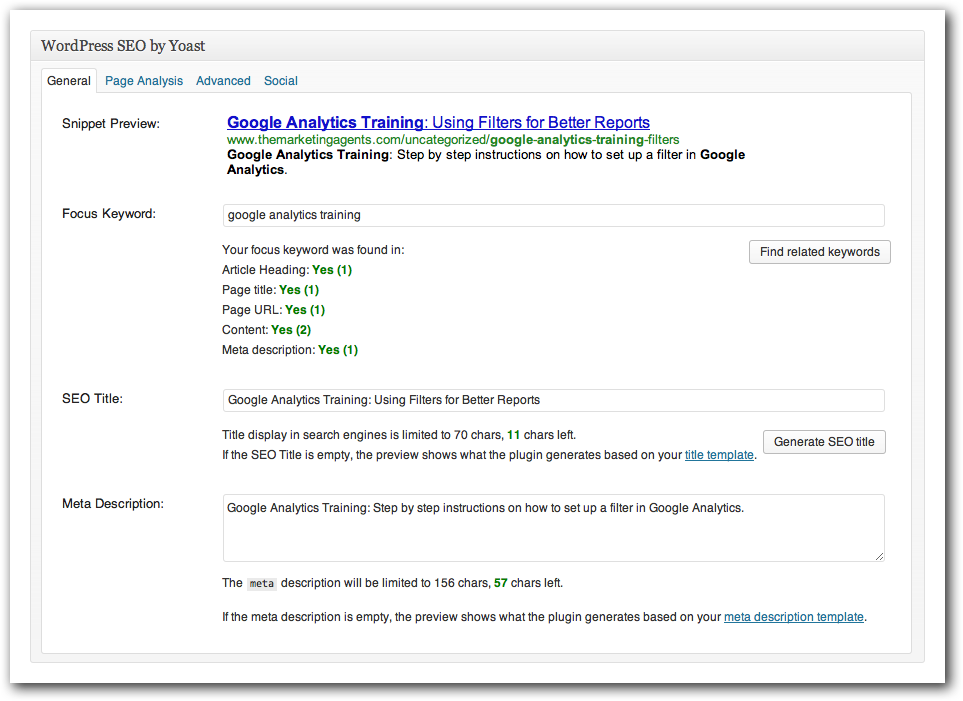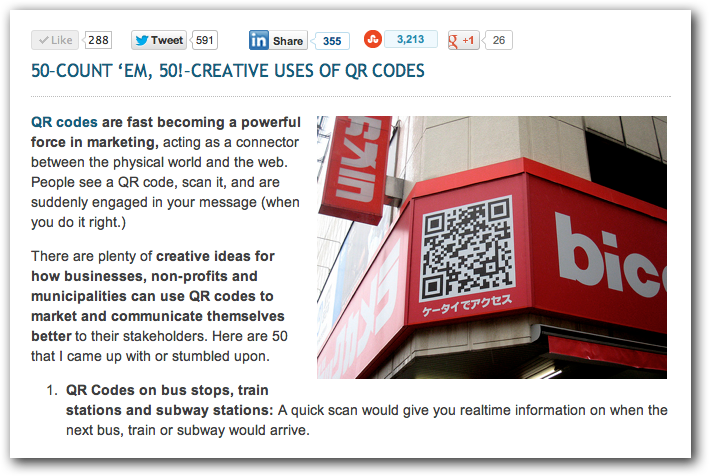Blogging Is Most Powerful Tool For Website Markiting
 A blog can be the most powerful web marketing tool at your disposal, but only if your ideal customers can find it.
A blog can be the most powerful web marketing tool at your disposal, but only if your ideal customers can find it.
In this article I’ll show you some simple changes you can make to your own blog that will help increase your search engine visibility, drive more traffic to your blog and generate more leads and sales for your business.
Start with keyword-rich topics.
Why are blogs such powerful tools for SEO (search engine optimization) and online visibility?
Because every blog post you write becomes another web page, and every web page is another opportunity to rank well for a specific search your ideal customer is doing right now.
Or in a month. Or in a year. Because good, evergreen content will continue to attract visitors to your blog or website for years, generating more leads for your business.
There are a number of ways to generate content ideas for your blog:
- Turn customer questions into “Dear Abby” style posts.
- Scour sites like Quora, Yahoo Answers, LinkedIn or other forums where your prospects may be asking questions.
- Take some keywords that you’d like to rank well for and run them through Google Adwords Keyword Tool. This free tool shows you how many people are searching for your phrases each month, suggests related phrases that might be better opportunities, and lets you know how competitive that search is. (The higher the competition, the tougher it will be to crack the first page of the search engines.)
Create a keyword-rich title.
By default, the title of your post becomes the title of your web page.
Search engines give more importance to your page title than just about any other variable.
Too often, businesses give blog posts vague titles like, “A Word to the Wise,” or “A Lesson from Man’s Best Friend.”
Unfortunately, your ideal customers aren’t searching for those phrases. And if they are, they’re probably not interested in your post specifically.
Here are some tips to title a blog post for maximum visibility:
- Lead with your keywords. Search engines give more weight to the first few words in a title. Examples might include, “Pinterest Marketing: How to Generate Leads from the World’s Hottest Social Media Site,” or “Men’s Bowler Hats: What’s Hot This Season.”
- Number your lists. I know many people hate numbered lists, but they speak to how busy we all are. “101 Ways to Save Money for College” or “3 Questions to Ask in a Job Interview” are generally more engaging, and will generate more click-throughs at the search engines, which may increase your overall rank.
- The colon is your friend. If you have a couple of competing keyword phrases that both seem appropriate, use a colon (or some other spacer) to cast a wider net. Do you write an Asian cooking blog? Try “Chopstick Instructions: How to Use Chopsticks.”
Work your keyword phrase into your copy early and often.
Your title is critical, but it can’t stand on its own; it needs to be supported by the rest of your copy.
You should work your keyword phrase into the first sentence or two of your blog post, and then repeat it several times throughout your post.
If you feel it’s difficult to work your keywords into the first sentence, try this trick: open up with a one to two sentence overview of your topic. If you still can’t work your keyword into the overview, then your blog post probably isn’t about your keyword anyway.
Warning! If you overuse your keyword phrase it can backfire. Google and other search engines may punish you for “over-optimizing” your post.
How much is too much? There’s no magic formula, but if your post doesn’t read well and the keywords feel forced into the rest of the copy, you’re probably guilty of over-optimizing.
You can also break up your keywords. If you wanted to rank well for, say, “Maine Web Design,” you could use that phrase exactly once or twice, but also use just “Maine” and “Web Design” separately in another instance.
Check your work with an SEO plugin.
Sometimes it’s good to get a second opinion.
There are a number of good SEO plugins for blogs out there, at least for WordPress, my preferred blogging platform. In the past I’ve used All In One SEO Pack, although lately I’ve been playing around with WordPress SEO by Yoast.
Once you’ve written the first draft of your blog post you can check to see if you’ve taken all the appropriate steps to make your post optimized for a given keyword phrase.
As you can see in this post, I’ve targeted the phrase “google analytics training” after doing some research using the Google Analytics Keyword Tool mentioned earlier.
The plugin gives me control over the title, allowing me to give the post and the page unique titles. This casts a slightly wider net, allowing me to rank for multiple, related search terms.
The plugin also prompts me to create a meta-description, the snippet-length phrase that appears below the big, blue link on the search engine results page. While opinions vary on whether this impacts your ranking, it can certainly increase your click-through rates when it’s well written and appears to address the problem your prospect is looking to solve.
Share your post through social networks.
Inbound links—links from other websites and blogs—increase your search engine visibility, all other things being equal. However, links from social media sites and the comments section of blogs often carry the “no follow” link, meaning no search engine benefits are being transferred.
The search engines are a little cagey about how much impact social buzz has on their search results, but there’s no question that Facebook powers Bing’s customized search, and Google+ affects your Google search results.
By sharing your post through these and other social media platforms, and getting others to do the same, you’ll drive more traffic and build awareness of your post.Even if a tweet or a LinkedIn update doesn’t boost your overall ranking, it might introduce you to a blogger who links to your post from within a post, which does carry search engine weight.
To encourage more sharing, be sure to add any appropriate “share” buttons to the top and bottom of your blog posts, encouraging visitors to share your content.
Transfer your blog’s search engine visibility to your website or e-commerce store.
Blogs are often more conversational, less sales-y than a traditional website. The non-sales-y approach often encourages other bloggers to link to you, where they wouldn’t normally link to a business website or e-commerce site.
However, your goal may not be to have the most popular blog, but rather to build your business. If you’d like to leverage your blog to grow your business, you’ll want to create keyword-rich links from blog posts to sales pages on your website.
A blog post about tips for growing tomatoes in a home garden might link to your page that sells tomato seeds. A post about finding the right nursing care for an aging parent might link to your page on transitional services for families.
Search engines focus on the words in links, so instead of creating a link that says, “click here” or “learn more,” you’ll want to create a link that says, “heirloom tomato seeds” or “transition plans for aging parents.”
By creating multiple blog posts—including leveraging guest blog opportunities—that point to a given page on your site, you can increase the search engine visibility of any webpage you wish.
Be the master of your own domain.
Although I’m a huge fan of WordPress, I would never run a business blog with the WordPress.com domain. Or Typepad.com. Or Blogger.com.
When you blog on someone else’s domain, i.e., gardenshop.wordpress.com, you’re building their search engine visibility, not yours.
Many blogging platforms have gone under in the past few years. You might be able to save your blog posts from the wreckage, but you’ll never recover all your inbound links and the trust you built up at that domain.
It’s critical to your success that you blog at a domain name you fully control. This could be part of your current site, i.e, gardenshop.com/blog, or it could be a separate domain entirely, i.e., gardenshopblog.com.
Takeaways for blogging for search engine visibility.
To create a blog that generates search engine traffic and new leads for your business, follow this simple formula:
- Build your blog on a domain you own and control.
- Focus each blog post around a narrow, keyword-rich topic.
- Create a title that starts with your best keywords.
- Use your keywords early and often in your blog post.
- Make your post easily shareable through the social networks.
- Leverage your blog’s newfound search engine power by linking to critical pages on your website or e-commerce store.










For research, it is best to start at online forums or search engines.
ReplyDeleteSome software application may offer you simply a few
broad categories. Visitors will then go to your site
to obtain the complete post.
Here is my weblog :: Buy Backlinks
We had a lot of trouble with our last SEO company we hired, been reading up on it
ReplyDeletein my spare time and next time I are going to employ someone in-house to sort it
Added a share on Facebook, hope you dont mind!